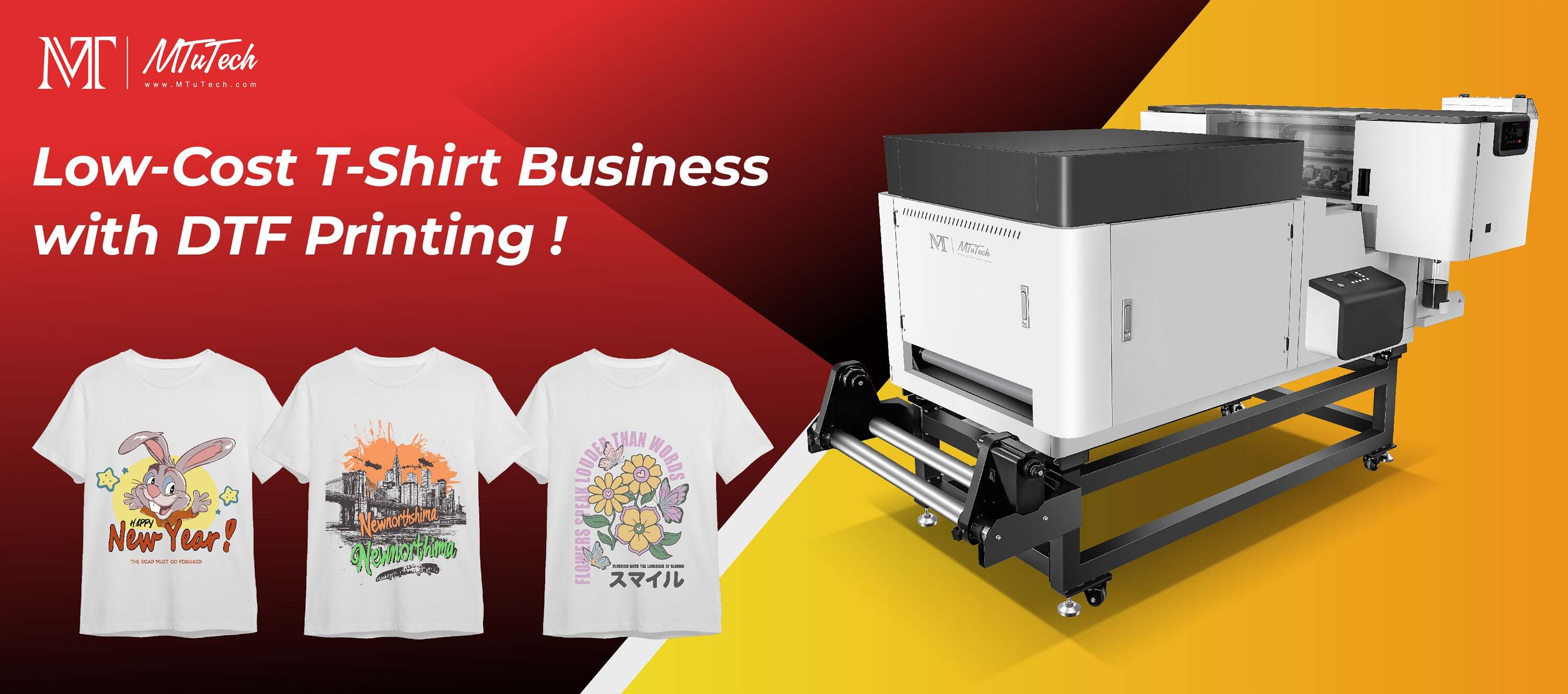Introduction
Direct to Film (DTF) printing has revolutionized the world of custom apparel and textile printing, providing businesses with an efficient and cost-effective way to produce high-quality designs. With the rising popularity of DTF printers, many entrepreneurs are considering investing in this technology but are often left wondering about the return on investment (ROI). This article explores the ROI of DTF printers, examining the costs involved, potential earnings, and how long it typically takes to recover your investment.
Understanding DTF Printing
Before diving into ROI, it’s crucial to understand what DTF printing entails. DTF printing involves transferring designs onto special films, which are then applied to garments using heat and pressure. This process allows for vibrant colors, fine details, and the ability to print on a variety of fabrics.
Initial Investment in DTF Printers
Cost Breakdown
The initial investment in a DTF printer can vary widely based on the quality and features of the machine. Here’s a breakdown of the potential costs:
Printer: The cost of a DTF printer can range from $2,000 to $25,000, depending on brand, size, and capabilities.
Film and Inks: Each transfer requires specific films and inks, which can add an additional $500 to $1,500 per month.
Heat Press: An industrial heat press is necessary for application and can cost between $300 and $2,000.
Software: Design software may also be needed, adding another $100 to $500 to your total.
Ongoing Operational Costs
Beyond initial setup, ongoing costs include:
Material Costs: Films, inks, and garments.
Maintenance: Regular maintenance and potential repair costs.
Labor: Wages for staff if applicable.
Projected Earnings with DTF Printers
Potential Revenue Streams
Once you’ve made the initial investment, the next step is to understand how much revenue you can generate. Here are some common revenue streams associated with DTF printing:
Custom Apparel Sales: Selling designed T-shirts, hoodies, and other garments.
Corporate Branding: Providing businesses with branded merchandise.
Personalization Services: Offering personalized items for events or celebrations.
Bulk Orders: Targeting schools, teams, and organizations that need larger quantities.
Price Points
The price you can charge for DTF-printed products varies. For custom T-shirts, prices typically range from $20 to $35, depending on the complexity of the design and the quality of the garment. Selling personalized items can fetch even higher prices, sometimes reaching $40 or more per shirt.
Calculating ROI: When to Expect Returns
Break-even Analysis
To determine how long it will take to recover your investment, you can perform a break-even analysis. For example:
Total Initial Investment: $10,000 (printer, heat press, initial supplies)
Average Selling Price per Item: $25
Cost per Item Sold: $10 (materials, labor, overhead)
Profit per Item: $15 (Selling Price - Cost)
Using these figures:
Break-even Point: Total Investment / Profit per Item = $10,000 / $15 = 667 items
Time Frame for ROI
The timeframe for reaching this break-even point depends on your sales volume. If you can sell:
100 items per month, you will break even in approximately 7 months.
200 items per month, you will break even in about 3.5 months.
300 items per month, you will break even in just over 2 months.
Factors Affecting ROI
Market Demand
Your ability to recover your investment largely depends on market demand for personalized or custom apparel in your area. Researching local competitors and understanding target customers will play a significant role in your success.
Marketing and Sales Strategy
A robust marketing plan can accelerate your sales. Utilize social media platforms, online marketplaces, and local events to showcase your products. Word-of-mouth referrals and customer reviews also significantly impact your sales trajectory.
Quality of Production
Investing in high-quality materials and maintaining your printer will produce better results, leading to higher customer satisfaction and repeat business. Quality craftsmanship can allow you to charge premium prices for your items.
Additional Considerations
Scalability of DTF Printing Business
Once you’ve established your business and broken even, there’s potential for growth. Scaling up can involve:
Investing in additional printers to increase production capacity.
Expanding your product range to include bags, hats, or home goods.
Building partnerships with local businesses for bulk orders.
Possible Challenges
Every business comes with its set of challenges. Some common issues faced by DTF printing entrepreneurs include:
Initial learning curve in using the printer effectively.
Competition from other printing technologies (like DTG or screen printing).
Understanding the legalities around copyright of designs.
Conclusion
Investing in a DTF printer can be a rewarding opportunity for entrepreneurs looking to enter the custom apparel market. While the initial costs can be significant, the potential for high profit margins and quick ROI makes it an attractive option. By carefully managing expenses, understanding market demand, and implementing a strong sales strategy, you can expect to recover your investment relatively quickly. If you are ready to take the next step in your printing journey, consider exploring your options: Explore our high-quality DTF printers here.
FAQ
What is the average cost of a DTF printer?
The cost of DTF printers can vary widely, typically ranging from $2,000 to $25,000 based on the brand and features offered.
How long does it take to print a design using a DTF printer?
Printing a design can take anywhere from a few minutes to an hour, depending on the complexity of the design, the machine's speed, and maintenance.
What are the maintenance requirements for a DTF printer?
Maintaining a DTF printer involves regular cleaning and alignment checks, replacing inks and films, and ensuring the printers are kept in optimal condition.
Can DTF printers print on all types of fabrics?
Yes, DTF printers are versatile and can print on a variety of fabrics such as cotton, polyester, and blends, making them suitable for numerous applications.

